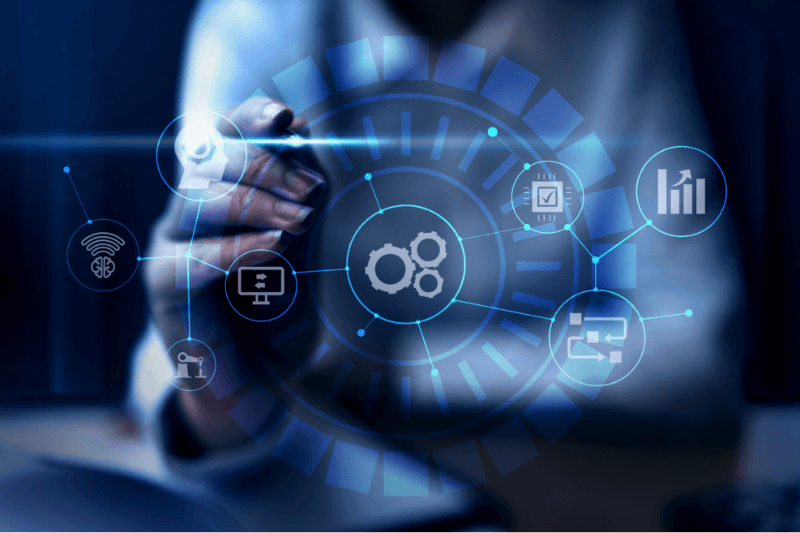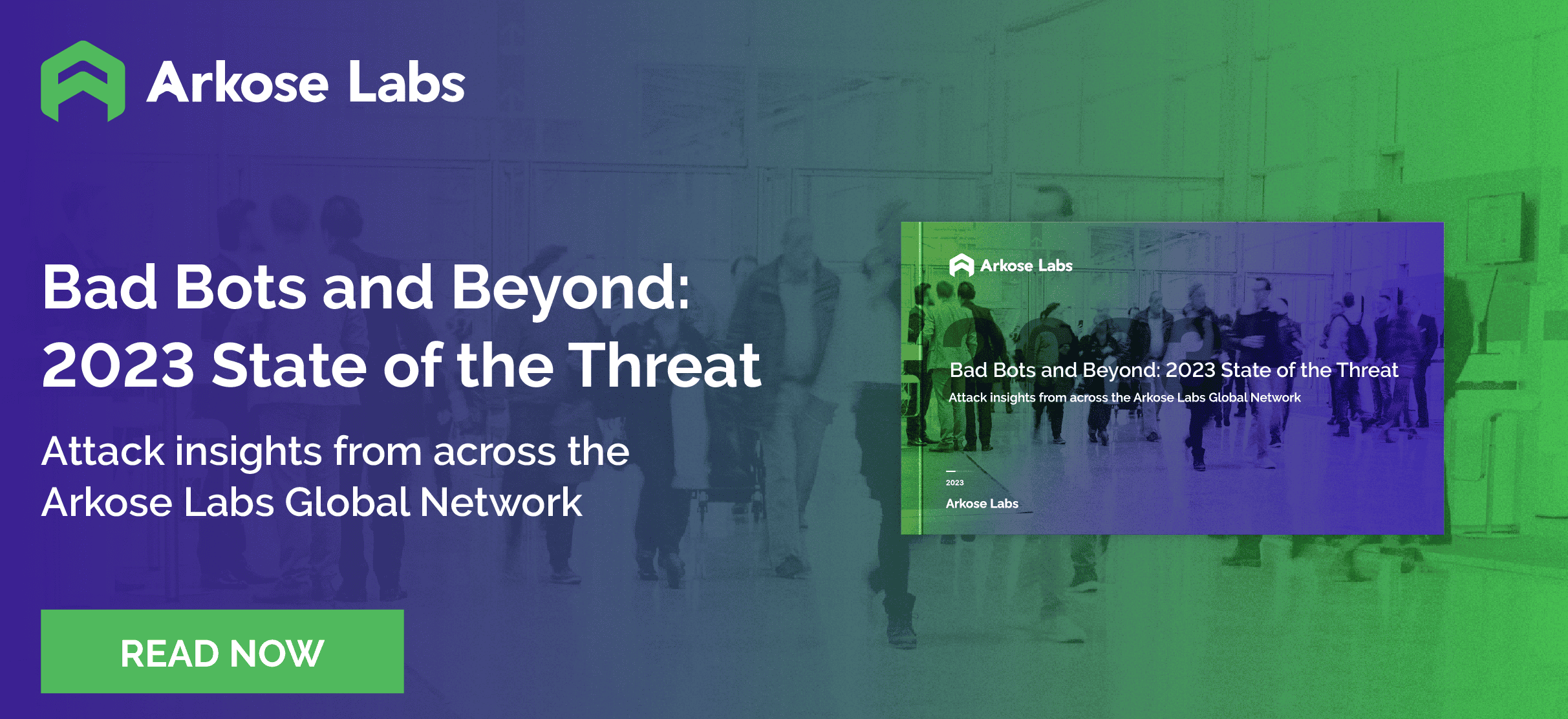IAM 101: Understanding Identity & Access Management
Identity and access management (IAM) plays a vital role in securing your data by controlling who has access to it. So what exactly is IAM? We will start with the definition of IAM and move on to the concepts and terminology used in IAM. We will also explain why IAM matters and its benefits to your organization. Additionally, we will cover how IAM works, authentication methods, and how IAM and bot mitigation work together to help organizations enhance their ability to detect, prevent, and mitigate the risks associated with bot activity.
What is Identity and Access Management?
Identity and Access Management (IAM) is a framework that manages digital identities and access to resources in an organization. IAM systems provide centralized administration and management of digital identities and related access rights. IAM solutions ensure that access to resources is based on individual user needs, roles, and policies.
IAM also extends beyond an organization's boundaries, involving the management of identities and access for third-party users. This can include partners, vendors, or customers who require access to specific resources or services. IAM solutions enable organizations to securely authenticate and authorize these external users, ensuring that they have appropriate access while maintaining their overall security posture.

Key Components of IAM
The three core elements of IAM are:
- Identification involves establishing the users' identity through authenticating and verifying their identities using a variety of inputs, such as passwords, biometrics, or tokens.
- Authentication is the process of verifying a user's identity to ensure they are who they claim to be.
- Authorization involves determining the user's access privileges based on their authenticated identity.
Identity and access management systems are designed to provide centralized administration and management of digital identities and access rights. These systems ensure that access to resources is based on individual user needs, roles, and policies, mitigating risks associated with unauthorized access and helping organizations meet regulatory and compliance requirements.
The Evolution of IAM
The concept of IAM started with simple account and password management; however, as the demand for more advanced security solutions increased, IAM solutions evolved. Currently, IAM technologies are integrated with cloud-based solutions, artificial intelligence, blockchain technology, and machine learning.
The demand for more sophisticated security solutions has driven the evolution of IAM. As organizations continue to face new and evolving threats, IAM solutions are becoming more sophisticated, integrating with cloud-based solutions, artificial intelligence, blockchain technology, and machine learning to provide more robust and effective security measures.
With the increasing use of mobile devices, IAM has also adapted to support authentication and authorization through smartphones. Mobile IAM solutions provide secure access to resources and services, allowing users to authenticate using their smartphones and receive one-time passcodes or biometric authentication methods. Likewise, the integration of Internet of Things (IoT) devices has made IAM systems more complex. Ensuring secure access to sensitive information requires comprehensive measures such as authentication factors like fingerprint or facial recognition.
IAM and Cybersecurity
IAM is a critical component of an organization's cybersecurity infrastructure. It involves the management of user identities, access controls, and permissions to ensure the right people have appropriate access to resources and data while maintaining data security. IAM encompasses various tools and technologies to streamline user management and enforce security policies.
IAM often relies on a directory, such as Active Directory, to store and organize user identities, including usernames and associated attributes. A directory acts as a centralized repository that enables efficient user authentication and authorization processes. It allows organizations to define access policies and assign privileges based on user roles and responsibilities, ensuring that users only have access to the resources they need to perform their jobs.
To enable secure authentication and authorization, IAM may utilize protocols like Security Assertion Markup Language (SAML) or OpenID Connect. These protocols facilitate the exchange of authentication and authorization information between identity providers, service providers, and users. SAML and OpenID Connect enable single sign-on (SSO) functionality, enhancing the user experience and reducing the risk of weak or compromised passwords.
Core Elements of Identity and Access Management
The core elements of IAM include identity lifecycle management, authentication and authorization, access control models, single sign-on (SSO), and multi-factor authentication (MFA).
Identity Lifecycle Management
Identity Lifecycle Management (ILM) is a crucial aspect of IAM. It helps organizations manage the entire lifecycle of a user's identity, from onboarding to offboarding. ILM ensures that only authorized users have access to resources and helps prevent unauthorized access. It also helps organizations comply with regulations by providing a centralized system for managing user access.
During the onboarding process, ILM ensures that new users are provisioned with the appropriate access to resources. This includes creating user accounts, assigning roles and permissions, and providing access to applications and data. ILM also ensures that user access is revoked when an employee leaves the organization, preventing unauthorized access to resources.

Authentication and Authorization
Authentication and authorization are two critical components of IAM. Authentication is the process of verifying the identity of a user, while authorization is the process of granting access to resources based on the user's identity. IAM solutions ensure that only authorized users can access resources across the organization.
Authentication can be achieved using a variety of methods, including passwords, biometric authentication, and smart cards. IAM solutions also provide mechanisms for managing user credentials, such as password policies and password resets. Authorization is typically managed through role-based access control (RBAC), which allows administrators to assign roles to users based on their job responsibilities.
Access Control Models
Access control models define how users can access resources. Common access control models include discretionary access control (DAC), mandatory access control (MAC), and role-based access control (RBAC). IAM solutions enable organizations to implement the appropriate access control model to control access to their resources.
DAC allows users to control access to their resources, while MAC is typically used in high-security environments where access is strictly controlled. RBAC is the most common access control model and is based on assigning roles to users based on their job responsibilities.
Governance
Governance is another critical aspect of IAM. It involves defining policies, procedures, and guidelines for managing user identities, access rights, and permissions. Governance ensures that IAM processes align with the organization's security requirements and regulatory compliance mandates. It also involves periodic reviews of access privileges to ensure that the right people have the necessary access and that privileged access is appropriately restricted.
Benefits of Implementing IAM Solutions
The benefits of identity and access management include: enhanced security, an improved user experience, streamlined operations, and scalability that supports business growth.
Enhanced Security and Compliance
Implementing IAM solutions can significantly enhance an organization's security and compliance posture. IAM solutions protect against unauthorized access, breaches, and data loss. They provide a centralized view of user access, which enables organizations to identify and mitigate potential risks.
Furthermore, IAM solutions provide compliance-related functions such as auditing, reporting, and access control. These functions help organizations remain compliant with regulatory requirements, such as HIPAA, PCI DSS, and GDPR. IAM solutions can also automate compliance-related tasks, such as access certification and policy enforcement, which saves time and reduces the risk of non-compliance.
Improved User Experience
IAM solutions can significantly improve the user experience by providing seamless access to authorized resources. IAM solutions eliminate the need for users to enter credentials repeatedly, reducing the risk of security breaches and enhancing the user experience. Users can access resources from any device, anywhere, and at any time, which enhances productivity and flexibility.
Moreover, IAM solutions can provide self-service capabilities, which enable users to manage their own identities, passwords, and access rights. This reduces the burden on IT help desks and improves user satisfaction.
Streamlined IT Operations
Implementing IAM solutions can streamline IT operations by automating user provisioning, identity management, and access control. This results in reduced IT overhead costs, faster administration, and improved compliance. IAM solutions can automate mundane and repetitive tasks, such as user onboarding and offboarding, which saves time and reduces errors.
Furthermore, IAM solutions can provide a single source of truth for user identities and access rights, which eliminates the need for multiple identity stores and reduces complexity. This results in faster and more accurate decision-making and improves overall IT efficiency.
Scalability and Flexibility
IAM solutions are designed to scale with the organization's growth. IAM solutions can handle large volumes of identities and access requests, which enables organizations to support their business growth. Furthermore, IAM solutions are flexible, enabling organizations to adapt to changing environments, such as mergers and acquisitions, new business units, and new partnerships.
IAM solutions can also integrate with other IT systems, such as HR systems, ERP systems, and cloud applications. This enables organizations to leverage existing investments and extend the value of IAM solutions.
Challenges and Risks in Implementing IAM Solutions
Implementing IAM solutions comes with its own set of challenges and risks. These include:
Managing Complex Environments
Organizations need to consider various factors, such as the organization's size, the number of applications, user credentials, and data sensitivity. IAM solutions need to be tailored to an organization's unique requirements. Organizations need to ensure that the IAM solution they choose can handle their complex environment and provide the necessary security controls.
For example, a large organization with multiple departments and applications may require a more comprehensive IAM solution than a smaller organization with fewer applications. The IAM solution needs to be scalable and flexible enough to meet the organization's current and future needs.
Balancing Security and User Experience
IAM solutions should provide tight security controls without hampering the user experience. It's a delicate balance that needs to be carefully managed.
For example, requiring users to enter multiple passwords or use complex passwords can improve security, but it can also lead to frustration and decreased productivity. Organizations need to find the right balance between security and user experience to ensure that their IAM solution is effective and user-friendly.
Ensuring Compliance with Regulations
IAM solutions need to comply with the relevant regulatory requirements, such as the General Data Protection Regulations (GDPR), HIPAA, and Sarbanes-Oxley Act (SOX).
For example, the GDPR requires organizations to implement appropriate technical and organizational measures to ensure the security of personal data. IAM solutions can help organizations meet this requirement by providing strong authentication and access controls.
Addressing Emerging Threats
IAM solutions must be updated to address new threats, such as ransomware, malware, and phishing attacks.
For example, phishing attacks are becoming more sophisticated, and organizations need to implement multi-factor authentication (MFA) to protect against these attacks. MFA requires users to provide multiple forms of identification, such as a password and a fingerprint, to access their accounts.
Best Practices for Effective IAM Deployment
Best practices for IAM deployment include assessing the environment, defining policies and procedures, monitoring and auditing the solution, and employee training.
Conducting a Thorough Assessment
Conducting a thorough assessment of the current environment includes identifying critical assets, assessing existing risks, and documenting necessary policies, procedures, and controls. A comprehensive assessment helps organizations understand their current security posture and identify potential vulnerabilities.
During the assessment, organizations should identify all the applications, systems, and data that require protection. They should also evaluate the existing security controls and determine if they are adequate to protect the assets. The assessment should also consider the organization's regulatory and compliance requirements.
Establishing Clear Policies and Procedures
Policies and procedures should cover user account creation, password resets, user roles and permissions, access requests, and termination procedures. Clear policies and procedures help ensure that users have appropriate access to the right resources and that access is granted and revoked in a timely manner.
Organizations should also have a process in place for reviewing and updating policies and procedures regularly. This helps ensure that the policies remain relevant and effective as the organization's security needs change over time.
Regularly Monitoring and Auditing
Organizations must continuously monitor user activity, access privileges, and compliance with policies and procedures. This helps identify and remediate anomalies before they turn into incidents. Regular audits help identify areas that need improvement and provide insights into how the IAM solutions are performing.
Investing in Employee Training and Awareness
Employee training and awareness are critical components of effective IAM deployment. Organizations must train employees on using IAM solutions, handling sensitive data, and following security policies and procedures. This increases employees' accountability and helps prevent security breaches.
Organizations should also provide regular security awareness training to all employees that covers topics such as phishing, social engineering, and other common security threats.
On-Premises vs Cloud IAM
IAM is not limited to managing user access to traditional servers and applications. It also extends to managing access to cloud-based services, virtualized environments, and other modern technologies. IAM solutions integrate with these platforms to enforce access controls and ensure consistent security across various IT infrastructures.
When deciding between on-premises and cloud IAM solutions, it's essential to consider your business needs and resources. While on-premises systems offer complete control, customization, and compliance with regulations, they may require significant investments in infrastructure, hardware, software licenses, and maintenance costs. Cloud IAM provides benefits such as cost savings, scalability, and accessibility from anywhere without compromising security, irrespective of the location of the user or application. It also provides secure access while maintaining access privileges across email/apps/federation/workflows etc. Ensure that you choose the right level of access at the right time with multi-factor authentication (MFA) mechanisms like biometrics, fingerprints, facial recognition, or two-factor authentication (2FA).
Cloud IAM and IDaaS
Cloud IAM and Identity as a Service (IDaaS) are two innovative technologies that can help businesses achieve better control over their employees' digital identities. By offering flexible and scalable identity and access management solutions through third-parties like Microsoft or Google Cloud Platform (GCP), these technologies eliminate the need for physical hardware and software to be installed on-site. They also reduce maintenance costs by automating some of the most common tasks, like user provisioning and deprovisioning, while ensuring secure access to sensitive data through multi-factor authentication methods like fingerprint scanning or facial recognition.
IAM Audit and Breaches
Regular IAM audits help identify security risks and vulnerabilities in the organization's sensitive information. Data breaches can lead to data loss, reputational damage, and financial losses. To comply with regulations such as GDPR and HIPAA that require a robust IAM system in place to govern digital identities' access privileges, it is imperative to conduct regular audits. Such breaches could be due to weak passwords or unauthorized access; hence, regular training programs for employees are essential in preventing them.
IAM and Bot Mitigation
Identity and access management and bot mitigation are two distinct but interconnected concepts in the context of cybersecurity.
IAM refers to the framework and processes used to manage digital identities and control access to resources within an organization's information technology (IT) infrastructure. Bot mitigation, on the other hand, focuses on identifying and mitigating the activities of malicious bots, automated scripts, or software applications that interact with systems or services in an unauthorized or undesirable manner. Bots can be used for various purposes, including web scraping, brute-force attacks, account takeover attempts, and distributed denial-of-service (DDoS) attacks.
The relationship between IAM and bot mitigation lies in the fact that IAM plays a crucial role in strengthening security and mitigating risks associated with bot activities. Here's how IAM relates to bot mitigation:
- User Identity: IAM solutions ensure that every user accessing a system or application has a unique identity. This enables organizations to track and distinguish between legitimate users and potential malicious bots. By establishing strong user identities, organizations can better identify and respond to suspicious activities associated with bot behavior.
- Authentication: IAM systems provide authentication mechanisms to verify the identity of users. Strong authentication methods, such as multi-factor authentication (MFA), can help prevent unauthorized access by bots attempting to compromise user accounts.
- Authorization and Privileges: IAM enables organizations to define and manage user access permissions and privileges. By implementing least privilege principles, organizations can restrict access to sensitive resources and limit the potential impact of bot attacks.
- User Behavior Analytics: IAM solutions often incorporate user behavior analytics to detect anomalies and potential threats. By monitoring and analyzing user behavior patterns, organizations can identify suspicious activities that may indicate the presence of bots. Unusual patterns, such as a high number of failed login attempts or abnormal data access requests, can trigger alerts and enable timely mitigation.
- Account Management and Revocation: IAM systems facilitate the centralized management of user accounts, including their creation, modification, and revocation. In the case of compromised user accounts due to bot attacks, IAM allows organizations to quickly revoke access, limit potential damage, and prevent further unauthorized access.
By integrating IAM principles and practices into their security strategies, organizations can enhance their ability to detect, prevent, and mitigate the risks associated with bot activity.
Conclusion
IAM is a critical solution for securing modern enterprises. With the increasing demand for advanced security solutions and regulatory compliance, IAM solutions provide enhanced security and streamline IT operations. Organizations should consider the critical components of IAM solutions, their benefits, challenges, and best practices to ensure a successful deployment. As IAM solutions continue to evolve, organizations should also consider future trends to stay ahead of emerging threats.
To learn more about how IAM can support bot mitigation efforts by establishing strong user identities, implementing robust authentication mechanisms, enforcing proper access controls, and enabling proactive threat detection and response, book a demo today!

